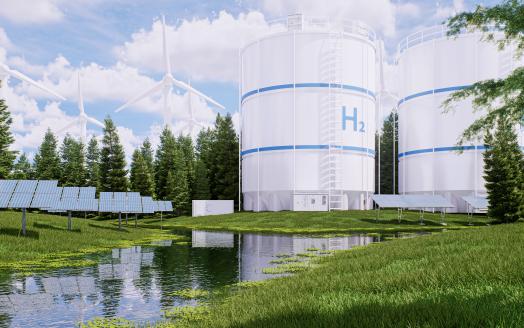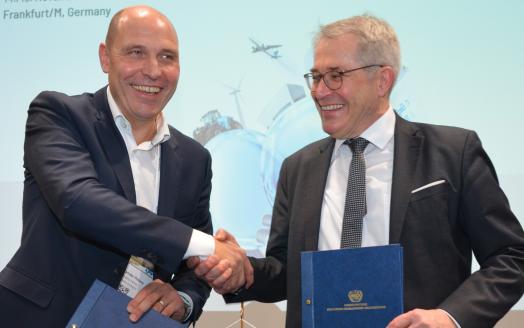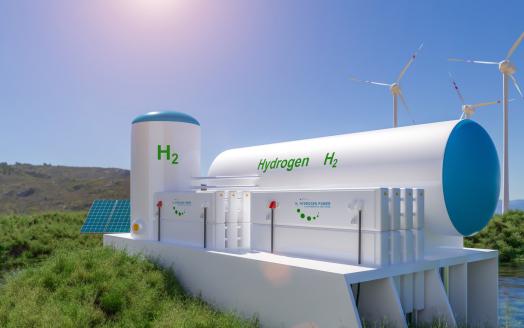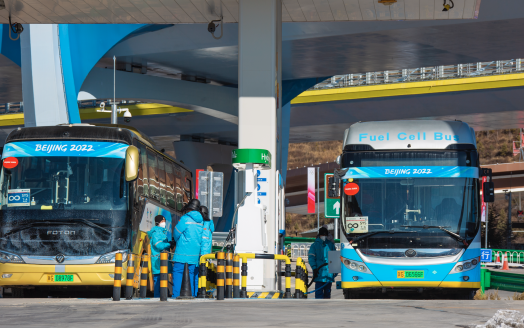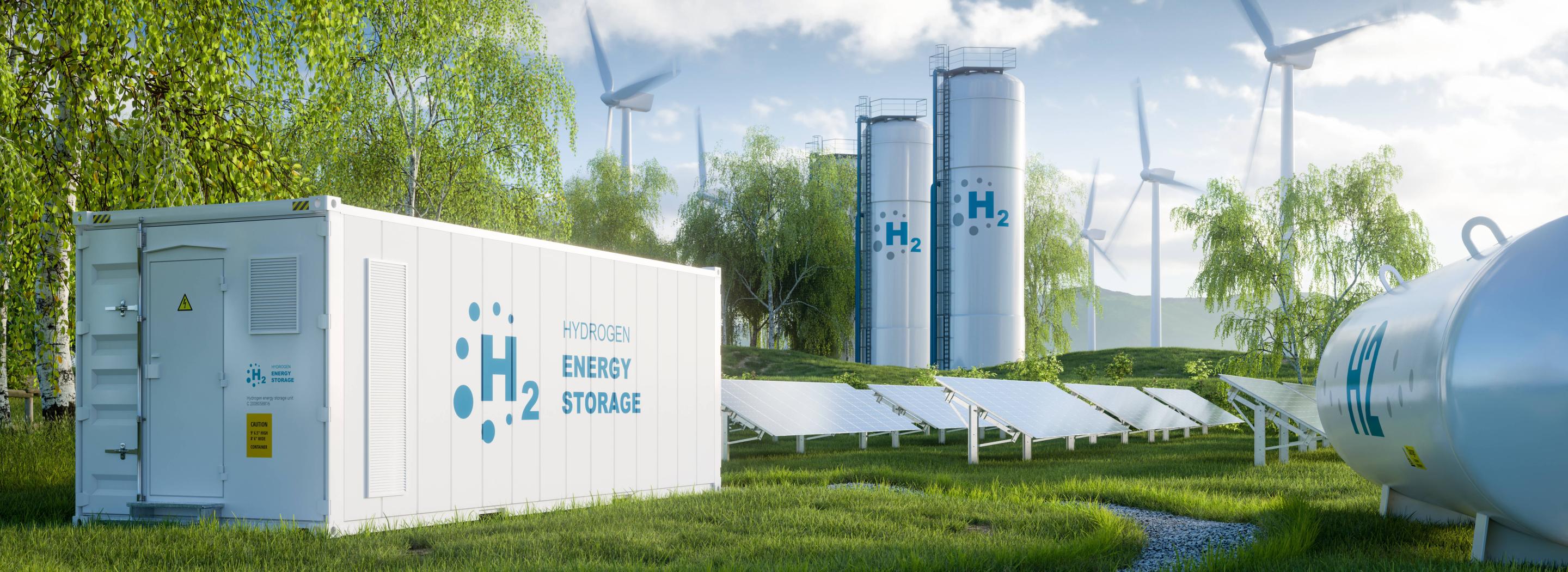8 January 2025
News
The International Hydrogen Energy Innovation Pioneer Competition Global Call
Competition Overview Climate change is a global consensus that all of humanity must address together, and hydrogen energy plays an irreplaceable role in the global energy transition. As a clean and efficient energy source, hydrogen energy has vast and rich application scenarios in sectors such as transportation, chemicals, energy storage, and metallurgy. Currently, hydrogen energy is at a critical stage, transitioning from research and development to industrialization. In response to the global energy strategy transformation, the International Hydrogen Energy Center (IHEC) aims to address key challenges in the hydrogen energy industry and promote the development and application of cutting-edge technologies. IHEC connects world-class international and domestic innovative enterprises and R&D teams, and organizes ‘Hydrogen Innovation, Empowering the Future’ —the International Hydrogen Energy Innovation Pioneer Competition.The International Hydrogen Energy Innovation Pioneer Competition is a global innovation competition focusing on three key areas: hydrogen energy and its applications, new materials, and the digitalization and intelligence of the hydrogen energy industry chain. The competition aims to discover and nurture projects that are innovative, practical, and commercially viable.This competition is organized by IHEC, under the guidance of UNIDO. It invites project submissions from startups, technology companies, and university teams around the world. The competition selects outstanding projects that demonstrate unique innovation, commercial potential, and sustainability. Through the international cooperation network of UNIDO, selected projects will receive opportunities for global collaboration, international project promotion, funding support, policy backing, and industry resource connections. The goal is to foster globally leading future unicorn enterprises in the hydrogen energy industry. The International Hydrogen Energy Center The International Hydrogen Energy Center (IHEC) in China is a technology innovation center with global influence in the field of hydrogen energy. It is launched by Beijing Tsinghua Industrial R&D Institute (BTIRDI) in collaboration with the United Nations Industrial Development Organization (UNIDO), with support from the Beijing Municipal Bureau of Economy and Information Technology and the China International Center for Economic and Technical Exchanges. IHEC is dedicated to addressing the key challenges in the development of the hydrogen energy industry. Through publishing industry reports, conducting cutting-edge research, developing core technologies, and nurturing leading enterprises, IHEC aims to create a global hub for hydrogen energy technology innovation. In strategic collaboration with leading hydrogen energy enterprises worldwide, IHEC is actively engaged in large-scale application demonstrations across key sectors, including hydrogen transportation, hydrogen metallurgy, and hydrogen chemicals, accelerating the promotion and application of hydrogen energy. Focus Areas for Submissions Hydrogen and Hydrogen-related Technologies and Equipment, including, but not limited to, novel and efficient low-cost hydrogen production technologies; advanced hydrogen storage solutions; the production and utilization of hydrogen-based fuels and chemicals; integration of hydrogen energy with industrial sectors (such as power generation, chemicals, metallurgy); and hydrogen safety monitoring technologies.New Materials, including, but not limited to, novel polymer materials, inorganic non-metallic materials, catalytic materials, functional membrane materials, and other innovative materials for hydrogen applications.Digitalization and Intelligence of Hydrogen Energy, including, but not limited to, innovative solutions for cost reduction, efficiency enhancement, and safety improvements based on technologies such as the Internet of Things (IoT), big data, and artificial intelligence. Eligible Participants Leveraging the cooperation network of UNIDO, the competition invites startups, technology companies, and university teams from around the world to participate.For projects with a registered company: The company’s first round of funding must have occurred after January 1, 2019, and the company valuation must not exceed 700 million RMB or 100 million USD.For projects without a registered company: The project should have a certain level of technological maturity and commercial feasibility, with a clear and comprehensive description of its technology application scenarios and market potential. The project must also present a clear future plan for the commercialization of the technology.Participants must be the founders or core members of the participating teams. Competition Schedule ✅ January 2025 to April 2025: Project Collection and Registration✅ April 2025: Online Preliminary Screening and Evaluation✅ May 2025: Offline Final (Beijing, China) Support and Rewards Market PromotionFirst Place: The winner will receive the opportunity to speak at the Blue Zone events and hydrogen energy side events at the United Nations Climate Change Conference (COP30, Brazil).Top Three: The top three winners will be granted a full-year free exhibition opportunity at IHEC exhibition hall, along with a speaking slot at the 2025 International Hydrogen Energy Center Industry Forum.All Finalist Projects: All projects that reach the final stage will be included in the IHEC Pioneer Technology Database and will be showcased and shared globally.Industry SupportConnecting with Leading Global Enterprises: Facilitation of connections with internationally leading companies in the hydrogen energy sector and their upstream and downstream resources.Space SupportOffice and Lab Space in Beijing: Provision of competitively priced office space, scarce laboratory resources, and factory facilities in Beijing, with the possibility of offering free space services to selected projects.Financial SupportDiverse and Professional Investment Services: A range of investment and financing services, including investment roadshow connections, direct investments from internal funds, cooperative venture capital, and technology-backed loans.Policy SupportAssistance with Government Support: Support in applying for relevant policies and qualification certifications from the Beijing Municipal Government. Contact Information For any inquiries, please contact us through the following methods:✅ Phone: +86 10-82355885✅ Email: wangxue@hycentre.org.cn✅ Website of the International Hydrogen Energy Center (hycentre.org.cn) Application Method ✅ Please follow the link below to download the registration form.✅ Submit the completed registration form and business plan to the email address: IHEC@hycentre.org.cn by March 30, 2025.
